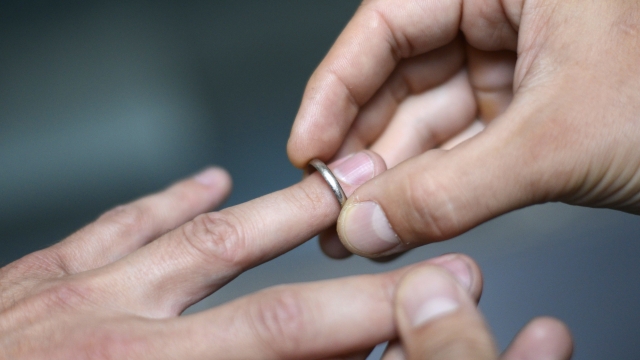In most of the animal kingdom, it’s easy to tell when a particular animal is looking for a partner. Female cats howl and spray urine. (If you live in a stray-populated area, I’m sure you know exactly what howl I’m talking about here.) Female chimpanzees will swell in their genital region – sometimes as large as a cantaloupe! – making it really hard to mistake. Female dogs show swelling, too, but it’s not as pronounced as it is with chimpanzees.
In other species, it’s the male who will show more signs. The frigate bird, for example, has a red throat that it can puff out like a balloon. Some birds dance, or sing a specific tune, or even bring their intended partner a gift. Male guinea pigs make a noise that rivals Chewbacca. (This is something I figured out quite on accident.)
With humans, it’s not so obvious, but there are signs – in both males and females. Some anthropologists and biologists think that humans might experience estrus at a lower level than other animals. This might explain why we generally have sex for pleasure, whereas other animals have sex for procreation. We’ve evolved to a state where we can control our sexual hormones, to a certain extent, and this makes things much more subtle.
But what if those scientists are wrong? Well, there is a separate group of psychologists who think that the first group doesn’t know what they’re talking about. (I’m paraphrasing here, of course.) Research has shown that the human menstrual cycle might be a little more obvious than we give it credit for. We’re just conditioned to ignore these signs so we can be proper members of society. (Okay, maybe I added that last part in there, but it would make sense.)
Even though women don’t generally swell up noticeably during their menstrual cycle, and most of us won’t howl out mating calls, for approximately six days during the regular cycle, there is a period when we may be more likely to dress provocatively, flirt, and, of course, be sexually aroused.
We’re also conditioned to pick up on these cues, says Jon Maner, PhD. According to one of his studies, men (as the participants were heterosexual) would react to a woman who was ovulating by inching closer to her and mimicking her gestures. It’s hard to translate this heterosexual-experiment to a homosexual-practical-application, though, because the results just don’t hold up outside of the lab.
Hormone researcher Sari van Anders, PhD, explains it like this: “These lab studies have never, to my knowledge, been extended into actual partner choice. If ovulation affects real-life mate choice so strongly outside the lab, why haven’t we seen these results?” Personally, we feel that the study needs a lot more refinement to be conclusive, and at its present incarnation it definitely seems to promote a sense of rape culture. (Yikes – we’re trying to put an end to that in 2016.)
A separate study suggests that hormones may respond to a person’s behavior, and not the other way around – giving humans that sex-hormone control that we touched on earlier. It is conclusive that neither men or women have a solid grasp on what their hormones are doing to their body or their behavior at any given moment. (The same study also found that there really are no actual differences between men and women in terms of personality, leadership, and intelligence. To which we say, hallelujah – science confirms that gendering personality traits is unnecessary.)
According to Maner, “The vast majority of all this occurs outside of our conscious awareness. It’s kind of like chemistry between two people. You know when you have it, but you’re not sure what it is.” This can either be comforting or scary, depending on how you look at it. On the one hand, having something fall into a higher power – whether science, God, the universe, or whichever combination of theories you may personally subscribe to – relieves us of some of the responsibility of such a thing. But, it also leaves room for misinterpretation of involuntary bodily responses. It excuses a lack of control over the response to a natural bodily process – which can, in some cases, be really dangerous.
There have been a number of other studies that pertain to the menstrual cycle and attraction, including one that compared the specific types of people that women were more inclined to be attracted to. This study took young (again, heterosexual) couples and used photographs of the men, judged certain features, and their perceived “attractiveness”. The female partners were then asked to rate their sexual feelings toward not only their own partner, but also the other male participants.
The study found that, during the peak of ovulation, women were more likely to prefer “masculine attractiveness” and stereotypically male characteristics, such as the “bad boy” type, even if their romantic partner was more stereotypically feminine in appearance and behavior. This is, of course, based on averages, and it’s bound to be different from woman to woman. Still, fertile and ovulating women were seen to prefer a short-term fling with someone that they wouldn’t want to settle down with – which might explain why so many women end up with men (and women) who they wouldn’t necessarily choose to settle down with. It might just have to do with when they met.
There was an interesting finding in the study, though. Women who were using contraception that suppressed their normal ovulation did not prefer the more masculine participants. Their results mid-cycle were more aligned with their preferences during the rest of their cycle, leaning toward those who were better partner material. It seems counterintuitive that we’d want to procreate with someone who isn’t going to stick around.
Steve Gangestad, PhD explains it like this. From an evolutionary standpoint, we are drawn to procreate with someone with “good genes”. This would be someone who exhibits strength, dominance, and “genetic fitness”. Gangestad thinks it’s probably a hold-over from the days when there was no real social construct that made faithfulness important. You know, back when humans had sex because they needed to keep their numbers up, and not because they liked how it felt.
But, according to another psychologist, Martie Haselton, PhD, there isn’t any solid evidence that says women are likely to act on these ovulation-induced desires. “But there are data trends in those directions.” Haselton goes on to say that there’s nothing proving that women are actually looking for “extracurricular sex”, but they will choose more “provocative and attractive clothing” while they’re ovulating – 60%, compared to 40% who didn’t. More interesting is that this doesn’t exclude women in long-term relationships. (Haselton thinks this might be an attempt to keep their partner’s attraction, rather than to attract someone new.) None of the study participants wore anything particularly revealing, probably because this study was conducted at a university that the participants attended.
What do you think – do these studies make sense, or do you think that they should be repeated with a broader range of participants? (Like perhaps including the LGBT+ community – that’s definitely something I want to see!) Of course, as science usually goes, there are rarely any concrete answers, but one thing’s for sure – human science is weird.
[interaction id=”56cf0bdffe5d459225c6c657″]









